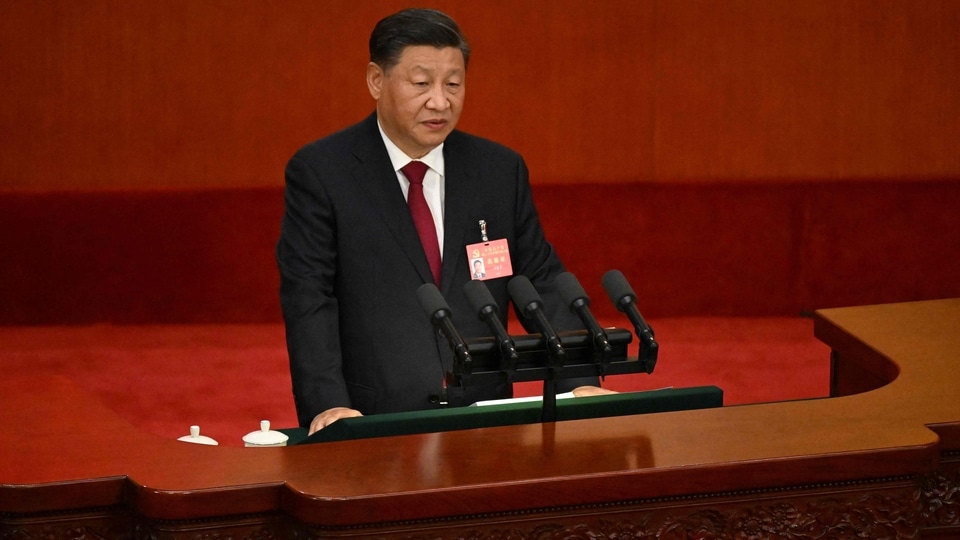How China Became a Threat to the US’s Tech Leadership
President Xi Jinping rallying call reflects the intensifying tensions between China and the US.


Seven years after China unveiled its ambitious Made in China 2025 plan to become globally competitive in 10 industries, President Xi Jinping is using the Communist Party congress this month to redouble efforts to “win the battle in key core technologies.”
His rallying call reflects the intensifying tensions between China and the US, which has tightened the screws in recent years on the transfer of cutting-edge technology to the world's second-largest economy.
Here are seven charts that illustrate how much China has closed the gap with the US in state-of-the-art technology, and why the Biden administration feels threatened to the point it is dramatically increasing restrictions.
Booming Research
As its economy has boomed, China has relentlessly increased investments in technology in the decades since Deng Xiaoping rekindled the country's economic opening up in the early 1990s. The country now lags just slightly behind the US in total expenditures on research and development.
Times of economic crisis have been opportunities for China to narrow its gap with the US. After the 2000 dot-com bust and the 2008-2009 global financial crisis, US R&D spending grew at a slower pace or shrank, whereas China kept expanding.
Gross R&D spending for 2021 isn't available yet from the Organisation for Economic Cooperation and Development, but China announced its official investment rose more than 14% to 2.8 trillion yuan ($388 billion) last year, accelerating from 10.2% in 2020. Meanwhile, the US federal budget for R&D fell 2.6% last fiscal year to $165.6 billion, according to the National Center for Science and Engineering Statistics.
High-Tech Demand Grows
The world's biggest exporter, China, is also the most aggressive importer of satellites, optical fibers, silicon, laser beams and other high-tech products that underpin the development of advanced technology. China's share in the global imports of high-tech products has steadily increased in the last decade from 16.3% to 18.6%, according to data from Kim Minwoo, a researcher at the Korea International Trade Association.
Some of that increase is likely due to China's position as the factory of the world, as it imports high-tech parts for assembly into products such as phones or computers that are then exported.
But the large amount of imported goods also means China is more vulnerable as the US toughens export controls. In particular, China's high-performance computing -- essential in aerospace, weapons and artificial intelligence development -- may be “severely damaged” if US bans widen further, according to TrendForce.
Supercomputing Status
China surpassed the US in the number of supercomputers in 2016, widening the gap to the most in 2020. But the lead is narrowing as the US increases restrictions on China's access to advanced devices, according to data from TOP500, a project that tracks trends in high-performance computing.
Supercomputers are used for a variety of purposes from climate forecasts to vaccine development to space exploration. They can also simulate nuclear tests and missile defense and handle large volumes of data used in artificial intelligence development. The new Biden administration restrictions on China exports specifically ban chips that are used in supercomputers and AI.
Supercomputer Speed
The problem is more serious for China when it comes to supercomputer performance. Whereas China struggles to improve speed, the US began to surge ahead last year, at the same time it imposed sanctions on seven Chinese supercomputing firms.
The US cited activities undermining American national-security or foreign-policy interests. Beijing has repeatedly rejected the American claims, saying the moves against Chinese tech firms are aimed at preventing China from surpassing the US.
AI Influence
China's stagnating supercomputer performance contrasts with the rising number of high-impact AI papers by its researchers, who can rely on data generated from the country's 1.4 billion-strong population.
China's academics got a boost in 2017 when the government enshrined the pursuit of global AI leadership by 2030. They focus more on surveillance-related tasks, such as tracking, action recognition and object detection compared with American ones, according to the State of AI Report 2022, by investors Nathan Benaich and Ian Hogarth.
Chip Size
The $550 billion semiconductor industry is the front-line in the tech war between the two countries. China accounted for 17% of global chip production in 2020, a jump from 2% in 2000, while the US share halved from 24% to 12% in the same period, according to South Korea. By 2030, China is forecast to raise its share to 24% while the US slides to 10%, according to a report from the Belfer Center for Science and International Affairs at Harvard University, which was published before the latest round of sanctions.
A key scorecard in the competition is progress in downsizing individual transistors for faster and more efficient chips. In July, China's Semiconductor Manufacturing International Corp. reportedly developed a Bitcoin-mining chip that was built with 7-nanometer technology, overturning expectations it wouldn't be able to develop a chip smaller than 10-nanometers due to a US ban on the sale of advanced lithography machines that project patterns on silicon wafers.
Despite that reported success, China is struggling to develop a domestic chip industry, even with the billions of dollars in funding it has thrown at the sector in the past decade.
Startup Money
The US has since widened regulations further limiting the sale of chipmaking tools to Chinese firms, including electronic design automation software key to 3-nm fabrication and beyond.
That is spurring China to accelerate the growth of its homegrown developers. Chinese startups in chipmaking and other key technologies outpaced US ones by about nine times in funding procurement last month, according to data available from Semiconductor Engineering, an industry publication.
“China believes what doesn't kill you will make you stronger,” said Kwon Seok Joon, author of “Semiconductor War in East Asia” who teaches chip fabrication at Korea's Sungkyunkwan University. “It's a war that will be costly for the US as well and intensify further after the congress as Xi ramps up his bid for self-reliance.”
Catch all the Latest Tech News, Mobile News, Laptop News, Gaming news, Wearables News , How To News, also keep up with us on Whatsapp channel,Twitter, Facebook, Google News, and Instagram. For our latest videos, subscribe to our YouTube channel.




















